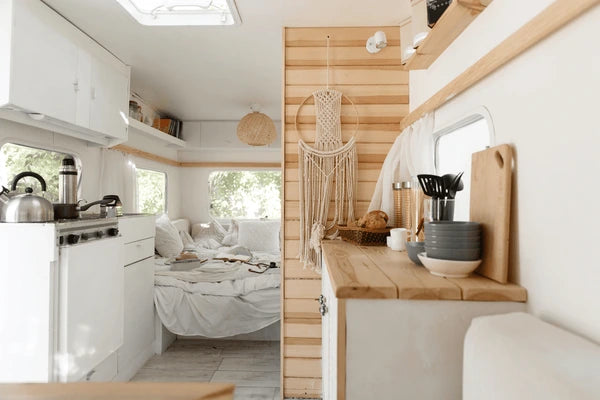Ceramic non-stick coatings are increasingly popular in cookware and kitchen appliances, offering a modern, safe, and eco-friendly alternative to traditional Teflon coatings. To truly understand the benefits of ceramic coatings, we’ll dive deeper into their unique characteristics, advantages, and why they are a standout choice in the world of non-stick technology.
1. Health and Safety Advantages
Teflon and High-Temperature Risks
Teflon (polytetrafluoroethylene, PTFE) is a popular non-stick coating but has safety concerns at high temperatures. When heated above 500°F (260°C), Teflon can decompose and release fumes that may be harmful to humans and pets.
Why Ceramic Is Safer
Ceramic non-stick coatings are made without PTFE or PFOA (perfluorooctanoic acid), a chemical used in traditional non-stick manufacturing that has been linked to environmental and health concerns. Ceramic’s natural composition ensures it remains stable at high temperatures (up to 800°F or 426°C) without emitting toxic substances. This makes ceramic-coated cookware and appliances, like the Uber Appliance Air Fryer, a safer choice for health-conscious families.
2. Eco-Friendliness and Sustainability
Teflon’s Environmental Impact
The production of Teflon coatings involves synthetic chemicals that are slow to degrade, raising environmental concerns. PFOA, once widely used in Teflon manufacturing, has been associated with water contamination and has taken years to phase out globally.
Ceramic’s Eco-Friendly Appeal
Ceramic coatings are derived from natural materials, such as sand and inorganic compounds. Their manufacturing process is water-based and produces fewer emissions, making it a more sustainable option. By choosing ceramic-coated appliances, consumers actively reduce their environmental footprint while enjoying the benefits of non-stick technology.
3. Performance and Durability
Heat Resistance
Ceramic coatings are highly resistant to heat, maintaining their integrity and non-stick properties even at high cooking temperatures. This makes them ideal for tasks like frying, roasting, or broiling, where intense heat is necessary. Teflon, on the other hand, deteriorates when exposed to prolonged high heat.
Scratch Resistance and Longevity
While both ceramic and Teflon coatings can scratch with improper use, ceramic surfaces are generally more durable and scratch-resistant. They can withstand light contact with metal utensils better than Teflon, which is more prone to peeling or flaking. This durability contributes to ceramic’s long-term reliability, as seen in the ceramic non-stick surfaces of Uber Appliance products.
4. Cooking Performance and Taste
Even Heat Distribution
Ceramic coatings excel in evenly distributing heat across the surface, which leads to consistent cooking results. For example, ceramic-coated air fryers ensure that food is evenly crisped, avoiding hot spots that might burn or undercook food.
Chemical-Free Cooking
Ceramic’s non-stick properties allow for healthier cooking with less oil or butter. This is particularly beneficial for individuals seeking a low-fat diet. In contrast, some Teflon coatings may degrade over time and can leach particles into food, especially when scratched or worn.
5. Cleaning and Maintenance
Ease of Cleaning
Ceramic coatings are naturally slick and prevent food from sticking, which simplifies cleanup. The ceramic interiors of Uber Appliance air fryers, for instance, can be wiped clean with minimal effort. Teflon coatings, while also easy to clean initially, may lose their effectiveness if scratched or damaged.
Avoiding Harsh Cleaners
Ceramic coatings are resilient against natural cleaners like vinegar and baking soda, which are safe and eco-friendly options. Teflon surfaces, however, can be sensitive to harsh detergents or abrasive cleaning tools.
6. Safety for Pets
Bird owners often avoid Teflon due to its potential to emit toxic fumes at high temperatures. Ceramic coatings provide peace of mind as they do not release harmful emissions, even when overheated.
7. Aesthetic and Design Appeal
Ceramic coatings come in a variety of colors and finishes, offering a sleek and modern look that complements contemporary kitchens. They add a touch of style to Uber Appliance products, combining functionality with visual appeal.
8. Drawbacks and Considerations
Lifespan
While ceramic coatings are durable, their non-stick properties may diminish over time, especially if exposed to frequent high temperatures or improper cleaning methods. However, proper care—such as avoiding metal utensils and using gentle cleaning techniques—can extend their lifespan significantly.
Cost
Ceramic-coated cookware and appliances can be slightly more expensive than their Teflon-coated counterparts. However, their safety, eco-friendliness, and performance justify the investment for many consumers.
Why Uber Appliance Uses Ceramic Non-Stick Coatings
Uber Appliance integrates ceramic non-stick coatings into its air fryers and other appliances to ensure health, safety, and superior cooking performance for its users. With ceramic interiors, Uber Appliance air fryers allow customers to cook with confidence, knowing their food is prepared on a toxin-free, easy-to-clean surface.
Conclusion
When it comes to choosing between ceramic and Teflon non-stick coatings, ceramic emerges as the clear winner for its safety, eco-friendliness, and cooking performance. Products like the Uber Appliance Air Fryer demonstrate how ceramic coatings can enhance everyday cooking experiences while supporting a healthier and more sustainable lifestyle.
By making the switch to ceramic-coated appliances, you’re not just investing in a high-quality kitchen tool—you’re prioritizing your health, the environment, and the overall taste and quality of your food.






Leave a comment